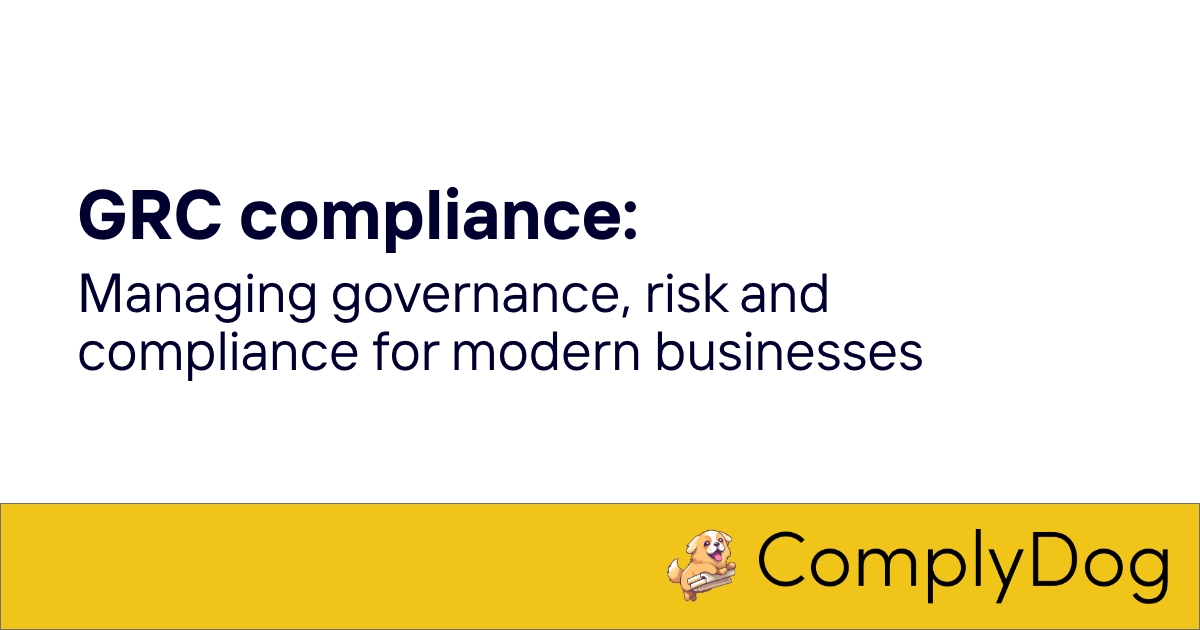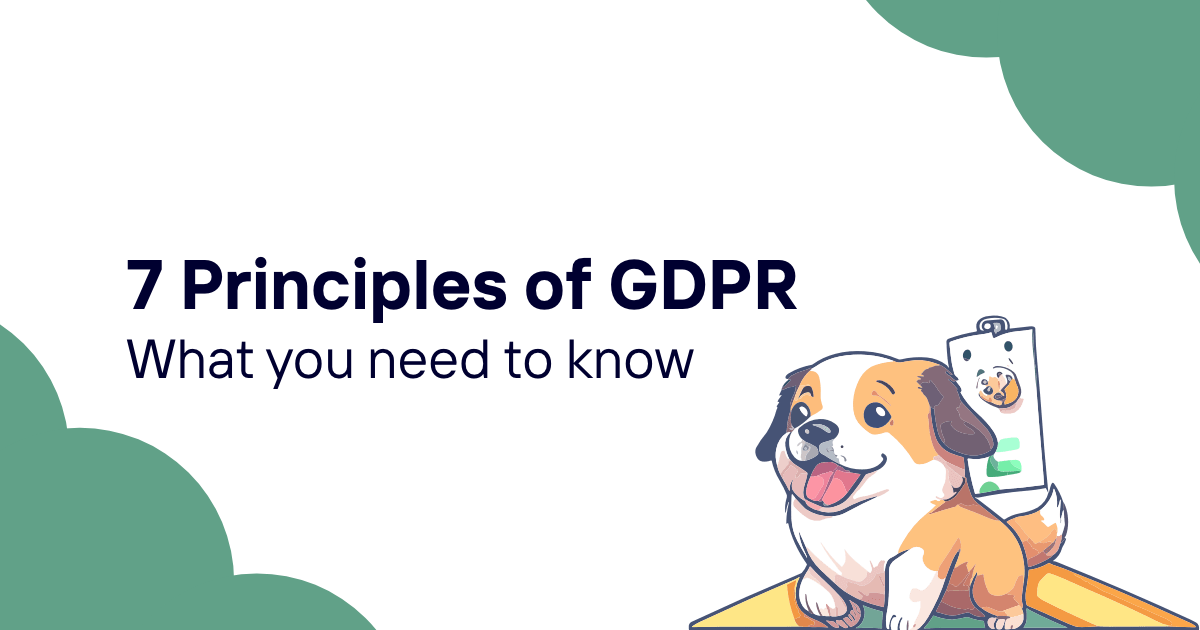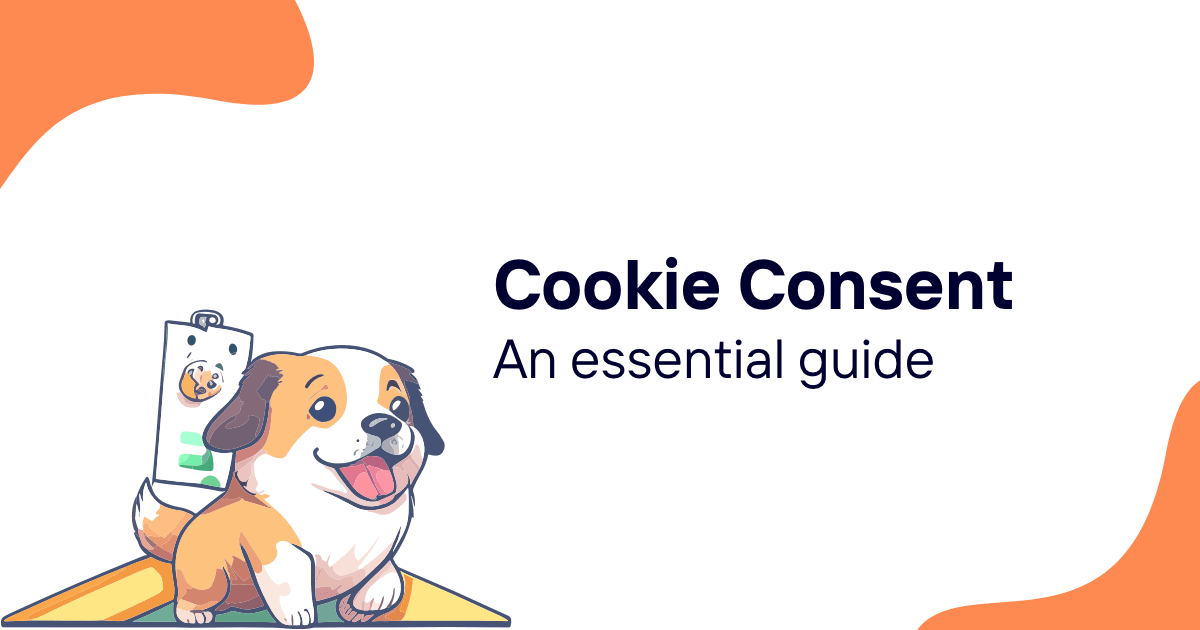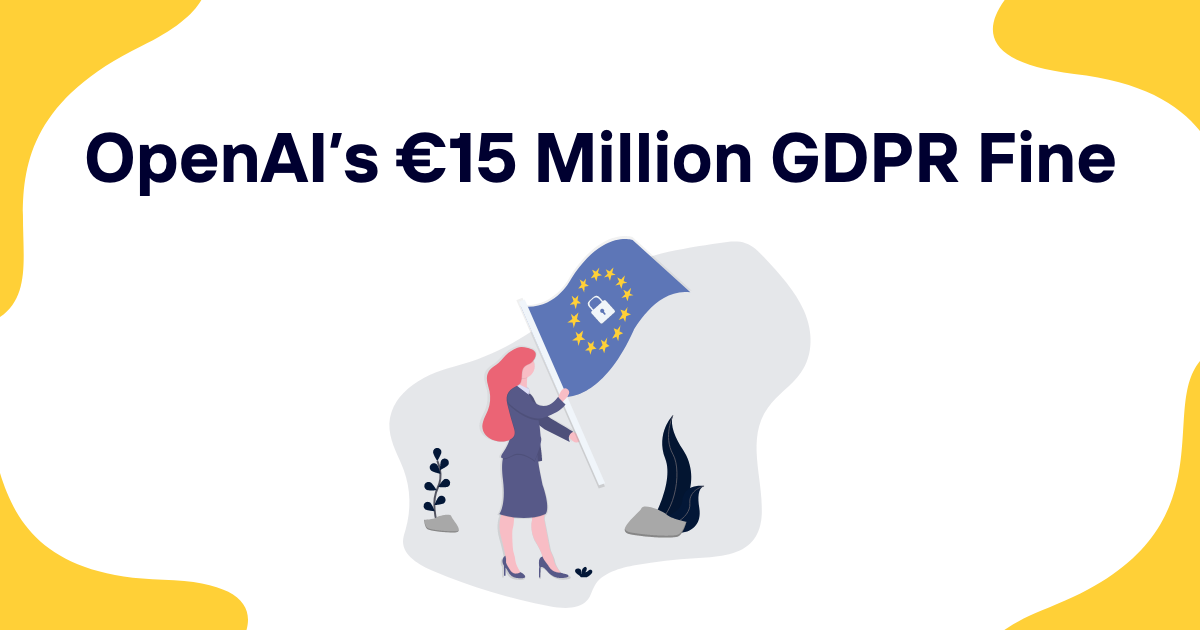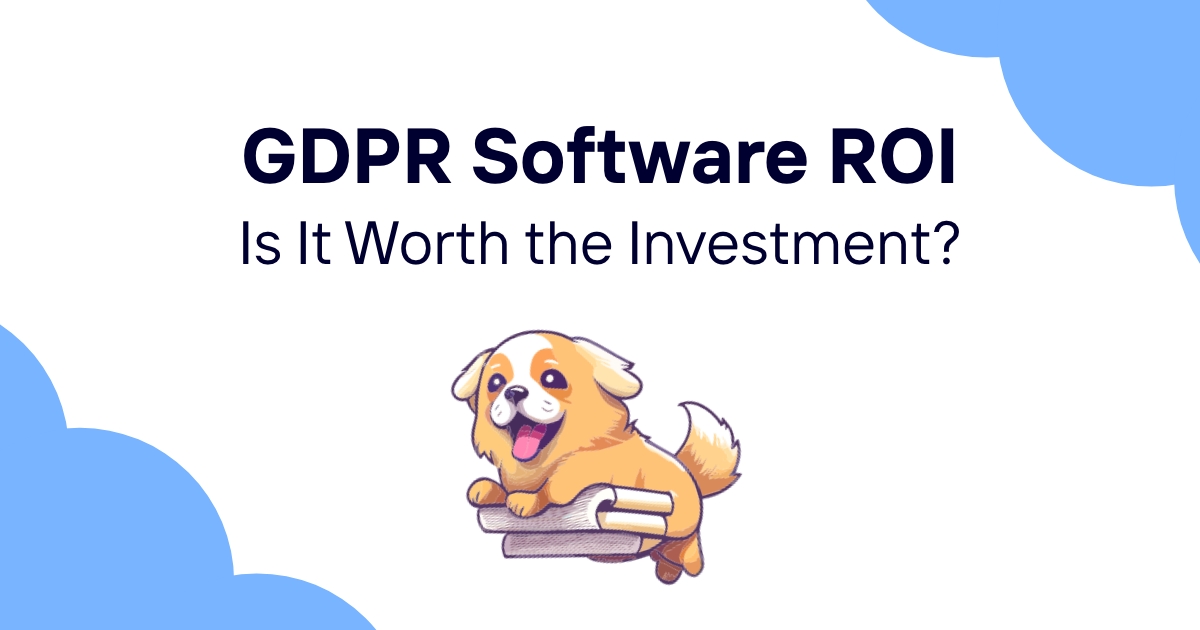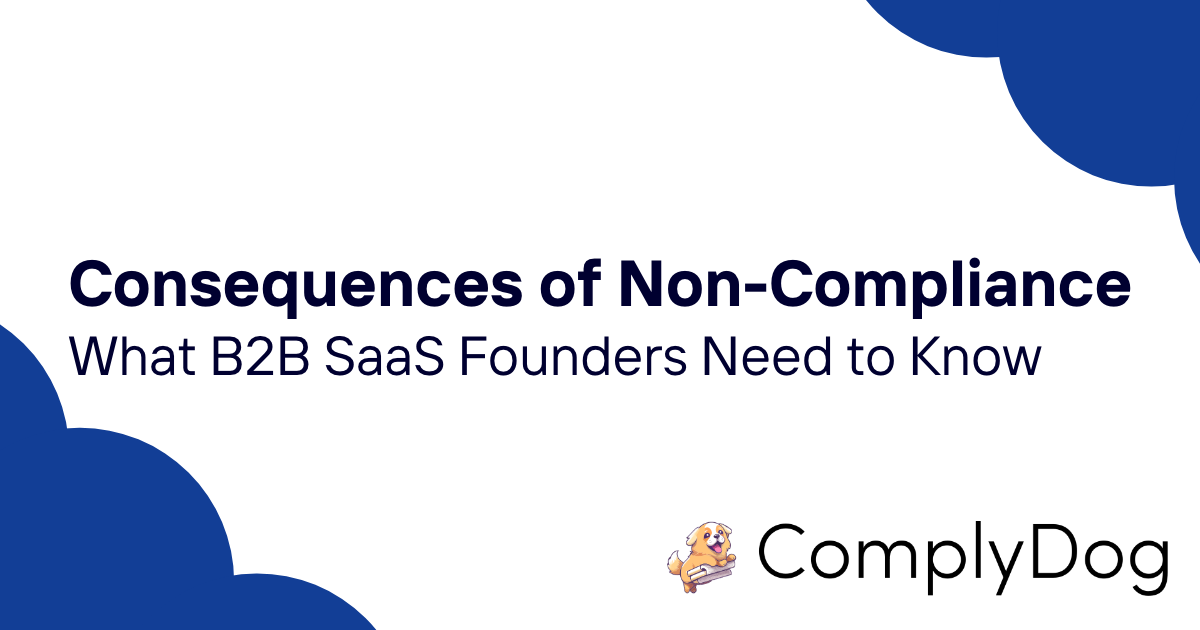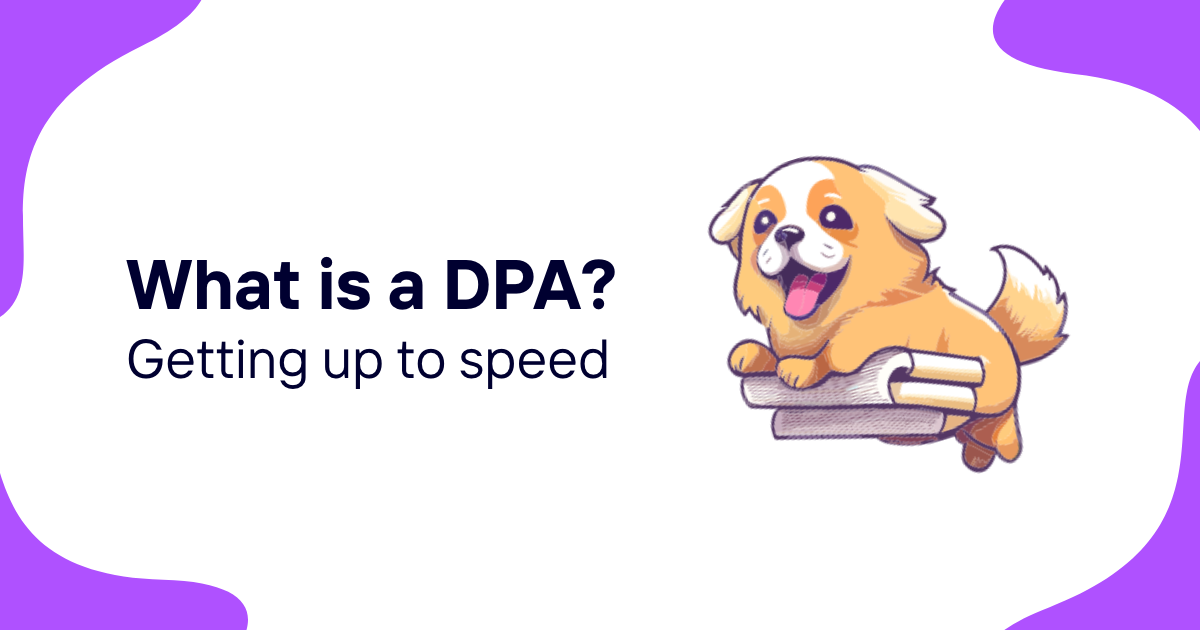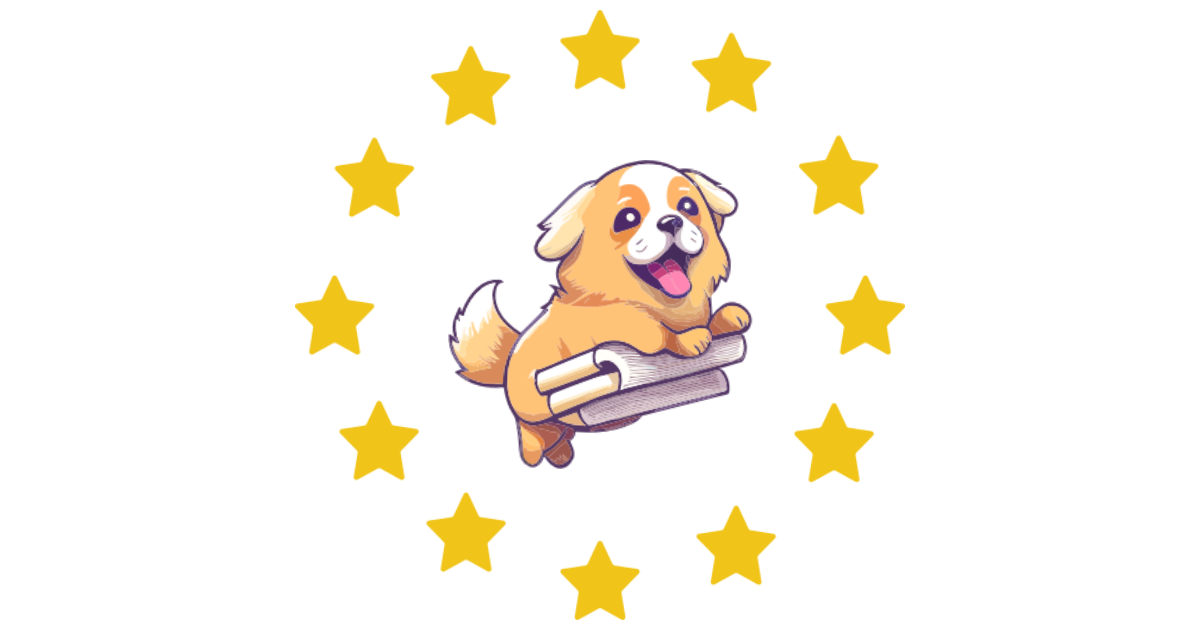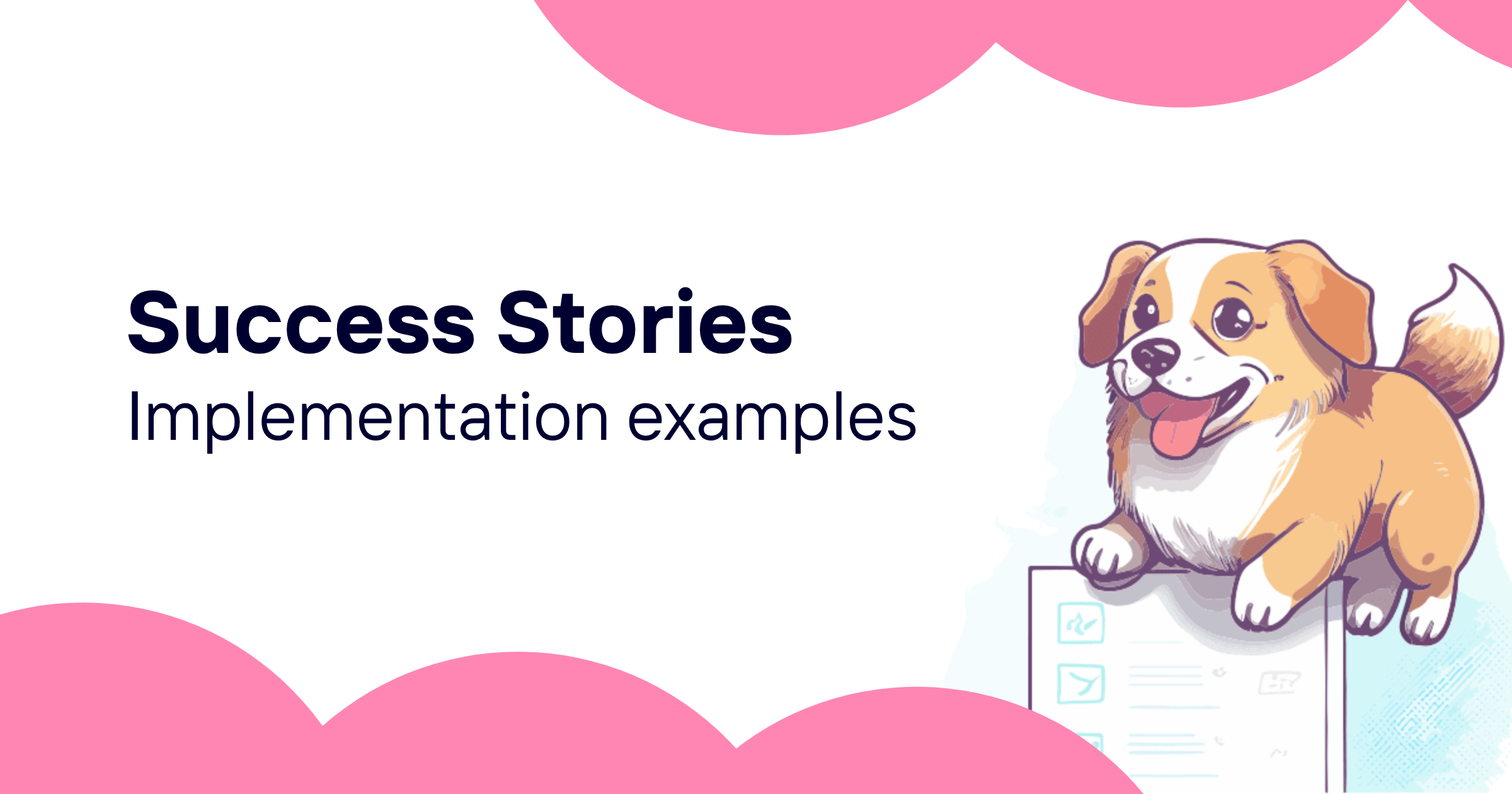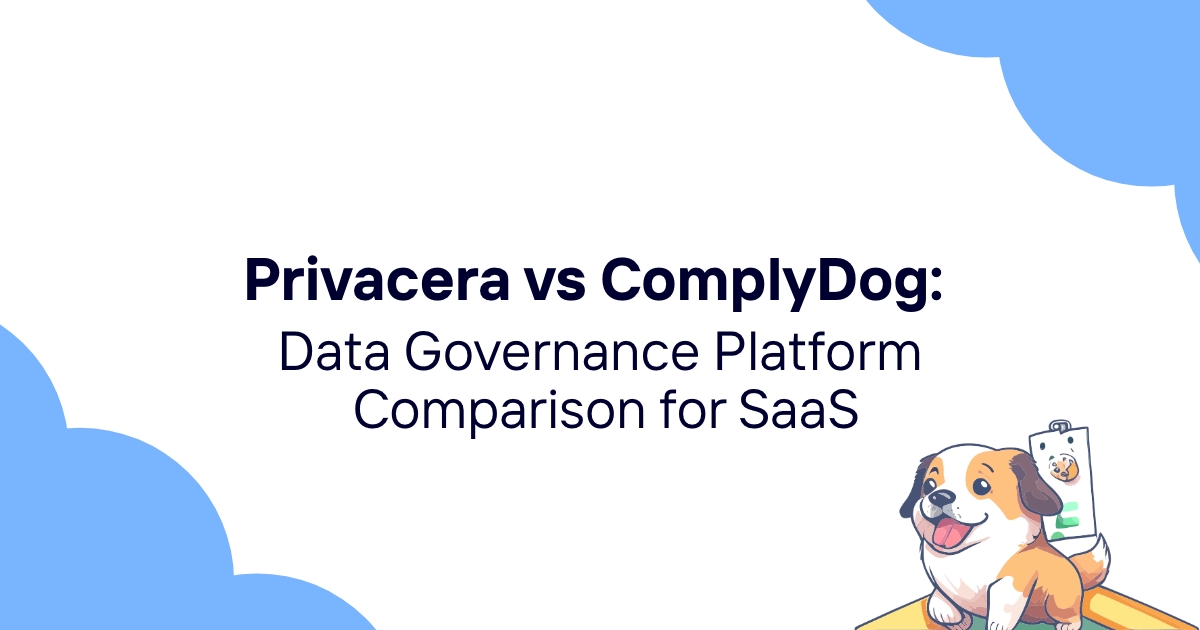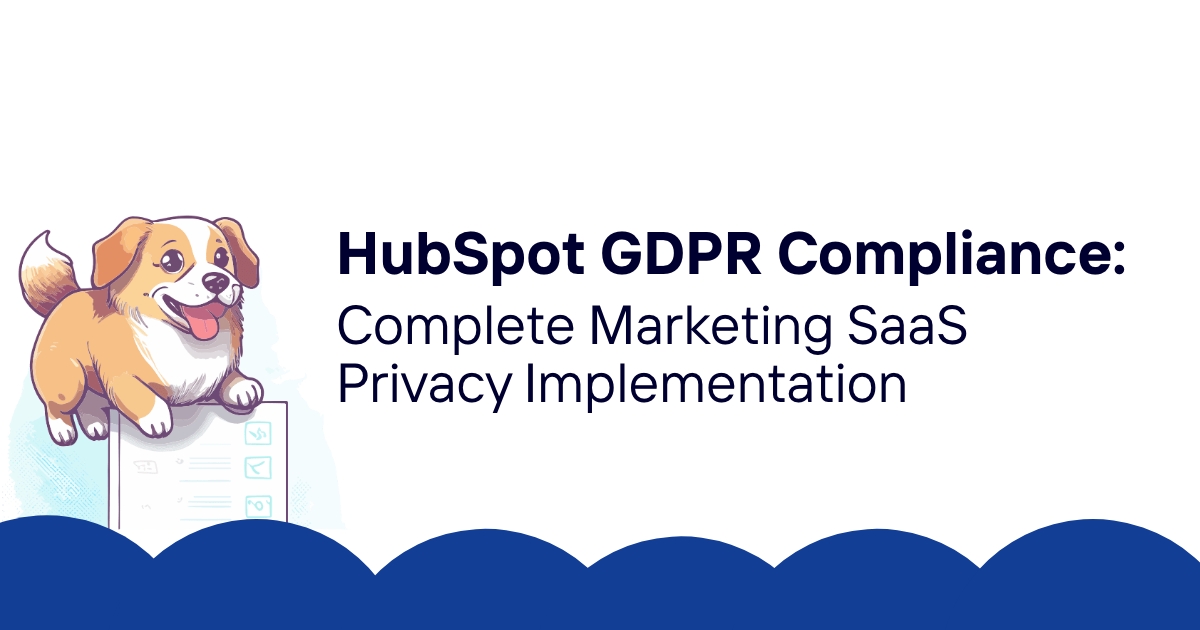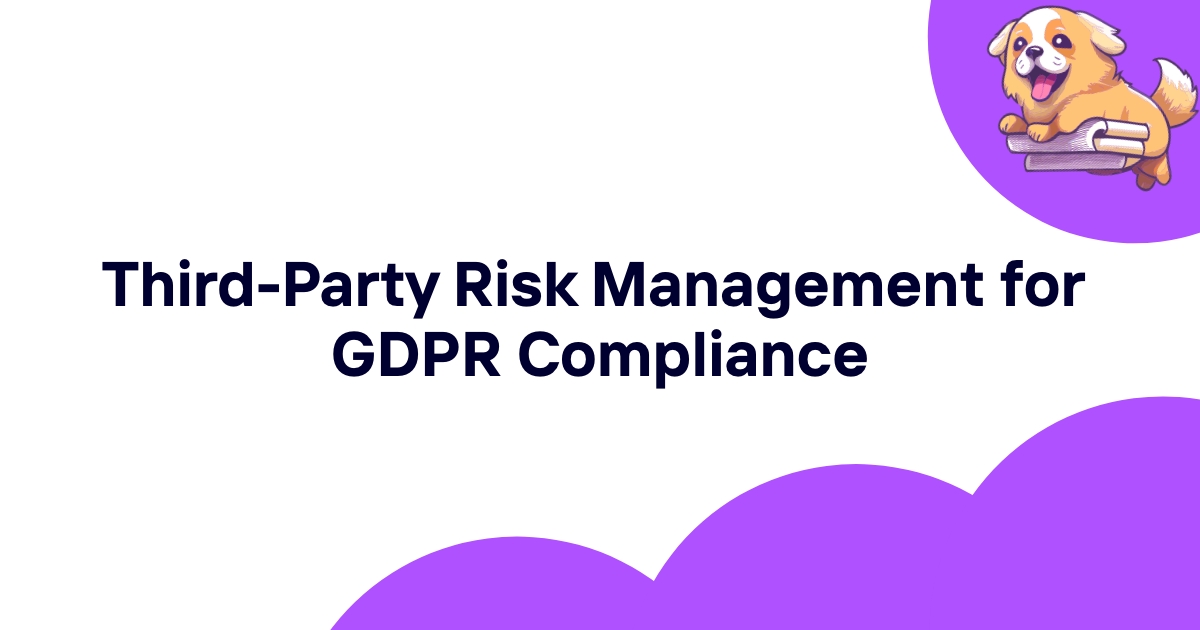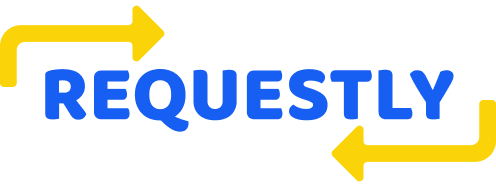Corporate scandals and regulatory violations cost organizations over $1 trillion annually. Companies that fail to manage their governance, risk, and compliance activities face mounting financial penalties, damaged reputations, and operational disruptions. GRC compliance offers a strategic approach to address these interconnected challenges.
GRC compliance integrates governance structures, risk management processes, and regulatory requirements into a unified framework. This approach helps organizations make informed decisions, protect against threats, and meet regulatory obligations while supporting business objectives.
Modern businesses operate under increasing regulatory scrutiny. Data protection laws, financial reporting requirements, and industry-specific standards create complex compliance landscapes. Companies need systematic approaches to manage these overlapping responsibilities without creating operational inefficiencies.
Table of contents
- What GRC compliance means
- The three pillars of GRC compliance
- Why GRC compliance matters for businesses
- Factors driving GRC implementation
- How GRC compliance works
- The GRC capability model
- Common GRC tools and technologies
- Challenges in GRC implementation
- Best practices for effective GRC strategy
- Measuring GRC maturity
- Future of GRC compliance
- Building your GRC program with ComplyDog
What GRC compliance means
GRC stands for governance, risk, and compliance - three distinct but interconnected business functions. The concept emerged in the early 2000s as organizations recognized the need to coordinate these traditionally separate activities.
Governance establishes the framework for organizational decision-making. It defines roles, responsibilities, and accountability structures that guide strategic choices. Risk management identifies, assesses, and mitigates potential threats to business objectives. Compliance ensures adherence to laws, regulations, and internal policies.
When these functions operate independently, organizations often experience:
- Duplicate efforts across departments
- Conflicting priorities and objectives
- Incomplete risk visibility
- Inefficient resource allocation
- Inconsistent reporting and communications
GRC compliance addresses these issues by creating integrated processes that align governance decisions with risk assessments and compliance requirements. This coordination reduces redundancy while improving information quality and decision-making speed.
The integrated approach recognizes that governance decisions impact risk exposure, which affects compliance obligations. Similarly, new regulations influence risk profiles and may require governance changes. By managing these relationships systematically, organizations achieve better outcomes with fewer resources.
The three pillars of GRC compliance
Governance
Governance provides the structural foundation for organizational management. It encompasses board oversight, executive leadership, strategic planning, and performance monitoring. Effective governance establishes clear decision-making authority and accountability mechanisms.
Key governance elements include:
- Board composition and independence standards
- Executive compensation and performance metrics
- Strategic planning and resource allocation processes
- Stakeholder communication and transparency policies
- Ethical standards and conflict of interest management
Corporate governance failures often result from inadequate oversight, misaligned incentives, or unclear accountability. Organizations with strong governance structures make more consistent decisions and respond more effectively to changing business conditions.
Risk management
Risk management involves identifying, analyzing, and responding to uncertainties that could affect business objectives. This includes both threats that could cause harm and opportunities that could create value.
The risk management process typically follows these steps:
- Risk identification - Cataloging potential threats and opportunities
- Risk assessment - Evaluating likelihood and potential impact
- Risk response - Selecting appropriate mitigation strategies
- Risk monitoring - Tracking changes in risk exposure over time
Organizations face various risk categories including operational, financial, strategic, reputational, and regulatory risks. Effective risk management requires understanding how different risk types interact and compound each other.
Enterprise risk management frameworks provide structured approaches for managing risks across entire organizations. These frameworks help ensure consistent risk assessment methods and coordinated response strategies.
Compliance
Compliance involves adhering to applicable laws, regulations, industry standards, and internal policies. The regulatory environment varies significantly across industries, jurisdictions, and business models.
Common compliance areas include:
- Data protection and privacy regulations
- Financial reporting and disclosure requirements
- Industry-specific safety and quality standards
- Employment and labor law obligations
- Anti-corruption and trade compliance rules
Compliance failures can result in financial penalties, operational restrictions, and reputational damage. The costs of non-compliance often exceed the investments required for effective compliance programs.
Regulatory requirements continue expanding in scope and complexity. Organizations need proactive approaches to track regulatory changes and assess their compliance implications.
Why GRC compliance matters for businesses
GRC compliance delivers both defensive and offensive business benefits. Defensive benefits include reduced regulatory penalties, lower operational risks, and improved crisis response capabilities. Offensive benefits include enhanced decision-making, improved stakeholder confidence, and competitive advantages.
Reduced costs and improved efficiency
Integrated GRC programs eliminate duplicate activities across different functions. Instead of maintaining separate governance committees, risk assessments, and compliance audits, organizations can create unified processes that serve multiple purposes.
This integration typically reduces:
- Administrative overhead for meetings and reporting
- Time spent on redundant data collection and analysis
- Resources required for multiple audit and review processes
- Costs associated with conflicting technology systems
Organizations with mature GRC programs report 20-30% reductions in compliance-related costs compared to traditional siloed approaches.
Better decision-making
GRC frameworks provide decision-makers with comprehensive information about governance requirements, risk exposures, and compliance obligations. This holistic view enables more informed strategic choices.
Decision-making improvements include:
- Faster access to relevant risk and compliance information
- More consistent evaluation criteria across different business units
- Better understanding of regulatory constraints and opportunities
- Improved ability to assess trade-offs between competing priorities
Enhanced stakeholder confidence
Stakeholders including investors, customers, regulators, and business partners increasingly expect robust governance and risk management practices. Organizations that demonstrate strong GRC capabilities often enjoy:
- Lower financing costs due to reduced perceived risk
- Stronger customer relationships built on trust and reliability
- More favorable regulatory treatment and reduced scrutiny
- Better partnership opportunities with risk-conscious counterparties
Factors driving GRC implementation
Several trends push organizations toward integrated GRC approaches. These drivers create business pressures that traditional siloed approaches cannot effectively address.
Regulatory complexity and change
The regulatory environment continues expanding across multiple dimensions. New regulations emerge regularly while existing ones undergo frequent updates and reinterpretations.
Organizations must track and comply with regulations at various levels:
- International standards and frameworks
- National and regional laws
- Industry-specific requirements
- Local government ordinances
- Internal policies and procedures
The interconnected nature of modern regulations means changes in one area often impact compliance in other areas. Data protection regulations, for example, affect IT operations, human resources, marketing, and customer service functions.
Third-party risk exposure
Modern businesses rely extensively on vendors, partners, and service providers. These relationships create indirect risk exposures that can be difficult to identify and manage.
Third-party risks include:
- Vendor security breaches affecting customer data
- Supplier operational failures disrupting business operations
- Partner compliance violations creating regulatory liability
- Service provider financial difficulties affecting service delivery
Organizations need systematic approaches to assess, monitor, and mitigate third-party risks across their entire partner ecosystem.
Stakeholder expectations
Investors, customers, and other stakeholders demand higher levels of transparency and accountability. Environmental, social, and governance (ESG) considerations now factor prominently in investment decisions and business relationships.
These expectations create pressure to:
- Provide more detailed and frequent reporting
- Demonstrate commitment to ethical business practices
- Show evidence of effective risk management
- Maintain consistency across all stakeholder communications
Technology complexity
Digital transformation initiatives introduce new risks while creating opportunities for improved GRC processes. Cloud computing, artificial intelligence, and data analytics offer powerful GRC capabilities but also create new compliance obligations and security vulnerabilities.
Organizations need frameworks that can adapt to rapidly changing technology landscapes while maintaining appropriate controls and oversight.
How GRC compliance works
GRC implementation requires coordination across multiple organizational functions and levels. Success depends on establishing clear roles, standardized processes, and effective communication mechanisms.
Organizational structure
Effective GRC programs require executive sponsorship and board oversight. Senior leadership must champion integration efforts and provide necessary resources for implementation.
Common organizational structures include:
- GRC steering committees with representatives from governance, risk, and compliance functions
- Cross-functional working groups focused on specific GRC challenges or initiatives
- Risk committees at the board level providing strategic oversight
- Compliance officers with enterprise-wide authority and reporting relationships
The specific structure depends on organizational size, complexity, and industry requirements. Smaller organizations may combine multiple roles while larger enterprises often need dedicated GRC teams.
Process integration
GRC integration focuses on aligning processes rather than consolidating organizations. Different functions maintain their specialized expertise while coordinating activities and sharing information.
Key integration points include:
- Joint risk and compliance assessments
- Coordinated policy development and maintenance
- Shared training and awareness programs
- Integrated reporting and dashboards
- Combined audit and monitoring activities
Process integration reduces redundancy while improving information quality and consistency.
Information management
GRC programs depend on accurate, timely, and accessible information. Organizations need systems and processes that collect, analyze, and distribute GRC-related data across different functions.
Information management requirements include:
- Centralized repositories for policies, procedures, and documentation
- Standardized risk assessment methodologies and scoring systems
- Automated compliance monitoring and alerting capabilities
- Integrated dashboards providing real-time status visibility
- Audit trails documenting decisions and actions
Technology plays a crucial role in managing information flows and supporting analytical capabilities.
The GRC capability model
The GRC Capability Model provides a structured framework for assessing and improving organizational GRC maturity. This model defines four core capability areas that organizations must develop to achieve effective GRC performance.
Learn
The "Learn" capability involves understanding organizational context, stakeholder expectations, and environmental factors that influence business objectives and strategies.
Learning activities include:
- Analyzing internal culture and values
- Assessing external regulatory and competitive environments
- Understanding stakeholder needs and expectations
- Identifying emerging risks and opportunities
- Evaluating organizational capabilities and limitations
Organizations with strong learning capabilities adapt more quickly to changing conditions and make more informed strategic decisions.
Align
The "Align" capability focuses on ensuring consistency between objectives, strategies, and actions across all organizational levels and functions.
Alignment activities include:
- Setting clear organizational objectives
- Developing strategies that consider risks and requirements
- Allocating resources based on priorities and constraints
- Coordinating activities across different business units
- Monitoring performance against established targets
Effective alignment reduces conflicts between different organizational priorities and improves resource utilization.
Perform
The "Perform" capability involves executing activities that promote desired outcomes while preventing undesired consequences.
Performance activities include:
- Implementing policies and procedures
- Operating risk management controls
- Conducting compliance monitoring and testing
- Responding to incidents and exceptions
- Managing change and continuous improvement
Organizations with strong performance capabilities achieve more consistent results and respond more effectively to disruptions.
Review
The "Review" capability focuses on evaluating the effectiveness of objectives, strategies, and actions to identify improvement opportunities.
Review activities include:
- Monitoring performance against targets
- Assessing the effectiveness of controls and processes
- Evaluating changes in internal and external environments
- Identifying lessons learned and best practices
- Recommending adjustments and improvements
Regular review cycles help organizations adapt to changing conditions and improve their GRC capabilities over time.
Common GRC tools and technologies
Technology platforms support GRC implementation by automating routine tasks, improving information access, and providing analytical capabilities. Organizations typically use combinations of specialized tools rather than single comprehensive platforms.
GRC software platforms
Integrated GRC platforms provide unified environments for managing governance, risk, and compliance activities. These platforms typically offer:
- Policy and procedure management capabilities
- Risk assessment and monitoring tools
- Compliance tracking and reporting functions
- Workflow management and approval processes
- Dashboard and analytics features
GRC platforms reduce the complexity of managing multiple separate systems while providing better integration and information sharing.
Risk assessment tools
Specialized risk assessment tools help organizations identify, analyze, and prioritize risks across different categories and business units. These tools often include:
- Risk registers and taxonomies
- Quantitative and qualitative assessment methods
- Heat maps and visualization capabilities
- Monte Carlo simulation and scenario analysis
- Risk appetite and tolerance frameworks
Risk assessment tools support more consistent and objective risk evaluation processes.
Compliance monitoring systems
Compliance monitoring systems automate the tracking of regulatory requirements and organizational adherence to applicable rules. Key features include:
- Regulatory change tracking and impact analysis
- Control testing and evidence collection
- Exception tracking and remediation workflows
- Compliance reporting and certification processes
- Audit management and coordination
These systems reduce manual effort while improving compliance visibility and accountability.
Data analytics platforms
Advanced analytics platforms help organizations extract insights from GRC-related data to support better decision-making. Analytics capabilities include:
- Predictive modeling for risk forecasting
- Pattern recognition for fraud detection
- Performance benchmarking and trending analysis
- Root cause analysis for incident investigation
- What-if scenario modeling for strategic planning
Analytics platforms transform raw GRC data into actionable business intelligence.
Challenges in GRC implementation
Organizations face several common obstacles when implementing integrated GRC programs. Understanding these challenges helps develop more effective implementation strategies.
Cultural resistance
Different organizational functions often have distinct cultures, priorities, and operating styles. Integrating these functions can create cultural conflicts and resistance to change.
Common sources of resistance include:
- Concerns about loss of autonomy and decision-making authority
- Skepticism about the benefits of integration
- Fear of increased scrutiny and accountability
- Preference for familiar processes and systems
- Competition for resources and recognition
Successful GRC implementation requires active change management and clear communication about benefits and expectations.
Data quality and consistency
GRC programs depend on accurate, complete, and consistent data from multiple sources. Data quality issues can undermine the effectiveness of integrated processes and decision-making.
Common data challenges include:
- Inconsistent definitions and classification schemes
- Incomplete or outdated information
- Manual data collection processes prone to errors
- Lack of standardized formats and systems
- Inadequate data validation and quality controls
Organizations need robust data governance programs to support effective GRC implementation.
Resource constraints
GRC integration often requires significant investments in technology, processes, and personnel. Organizations may struggle to justify these investments or allocate sufficient resources for successful implementation.
Resource constraints typically involve:
- Limited budgets for technology acquisition and implementation
- Insufficient staff with appropriate skills and experience
- Competing priorities for management attention and resources
- Lack of executive support for long-term investments
- Difficulty measuring and demonstrating return on investment
Phased implementation approaches can help organizations manage resource constraints while building momentum for broader GRC initiatives.
Technology integration complexity
Organizations often have multiple existing systems supporting different GRC functions. Integrating these systems can be technically challenging and expensive.
Integration challenges include:
- Incompatible data formats and system architectures
- Legacy systems with limited integration capabilities
- Security and access control complications
- Performance and reliability concerns
- Ongoing maintenance and support requirements
Organizations should carefully evaluate integration options and may need to replace outdated systems to achieve effective integration.
Best practices for effective GRC strategy
Successful GRC implementation requires careful planning, strong leadership, and systematic execution. These best practices help organizations avoid common pitfalls and achieve better outcomes.
Start with clear objectives
Organizations should define specific, measurable objectives for their GRC programs before beginning implementation. Clear objectives help focus efforts and provide criteria for evaluating success.
Effective objectives typically address:
- Specific business problems or opportunities
- Measurable performance improvements
- Realistic timelines and resource requirements
- Alignment with organizational strategy and priorities
- Stakeholder expectations and requirements
Secure executive sponsorship
GRC integration requires sustained leadership commitment and resource allocation. Executive sponsors should understand the strategic value of GRC and actively champion implementation efforts.
Executive sponsorship involves:
- Communicating the importance of GRC to the organization
- Providing adequate funding and resource allocation
- Removing organizational barriers and resistance
- Monitoring progress and holding teams accountable
- Celebrating successes and learning from setbacks
Adopt phased implementation
Large-scale GRC implementations can be overwhelming and prone to failure. Phased approaches allow organizations to build capabilities gradually while demonstrating value and learning from experience.
Common phasing strategies include:
- Starting with high-impact, low-complexity initiatives
- Focusing on specific business units or geographic regions
- Implementing one GRC component at a time
- Piloting new technologies and processes before broad deployment
- Building on early successes to generate momentum
Invest in training and communication
GRC implementation affects many different roles and functions across organizations. Comprehensive training and communication programs help ensure understanding and support for new approaches.
Training and communication should address:
- The business case and benefits of GRC integration
- New roles, responsibilities, and processes
- Technology systems and tools
- Policies, procedures, and standards
- Performance expectations and measurements
Focus on continuous improvement
GRC programs should evolve continuously to address changing business conditions, regulatory requirements, and organizational needs. Regular assessment and improvement processes help maintain program effectiveness.
Continuous improvement activities include:
- Regular program assessments and maturity evaluations
- Benchmarking against industry best practices
- Stakeholder feedback and satisfaction surveys
- Performance measurement and trend analysis
- Process optimization and technology updates
Measuring GRC maturity
Organizations can assess their GRC maturity using various frameworks and measurement approaches. Maturity assessments help identify strengths, weaknesses, and improvement opportunities.
Maturity levels
GRC maturity typically progresses through several stages:
Initial/Ad Hoc - GRC activities are reactive, informal, and inconsistent across the organization. Processes depend heavily on individual knowledge and effort.
Developing - Organizations begin formalizing GRC processes and establishing basic coordination mechanisms. Some standardization occurs but integration remains limited.
Defined - Clear GRC processes and responsibilities exist across the organization. Integration improves but may still be incomplete in some areas.
Managed - GRC processes are well-integrated and consistently applied. Performance measurement and continuous improvement mechanisms operate effectively.
Optimized - GRC capabilities are fully mature with advanced integration, automation, and optimization. The organization leads industry practices and shares knowledge with others.
Assessment criteria
Maturity assessments typically evaluate multiple dimensions:
- Process integration - Degree of coordination between governance, risk, and compliance activities
- Information sharing - Quality and accessibility of GRC-related data and reporting
- Technology utilization - Effectiveness of systems supporting GRC processes
- Organizational alignment - Clarity of roles, responsibilities, and accountability
- Performance measurement - Comprehensiveness and accuracy of GRC metrics
- Continuous improvement - Effectiveness of learning and adaptation processes
Benchmarking approaches
Organizations can compare their GRC maturity against various benchmarks:
- Industry peer groups and sector averages
- Regulatory expectations and guidance documents
- Professional standards and best practice frameworks
- Internal historical performance and trend analysis
- Third-party assessment and certification programs
Regular benchmarking helps organizations understand their relative position and identify improvement priorities.
Future of GRC compliance
GRC compliance continues evolving in response to technological advances, regulatory changes, and business model innovations. Several trends will shape future GRC practices.
Artificial intelligence and automation
AI technologies offer significant potential for improving GRC efficiency and effectiveness. Machine learning algorithms can analyze large datasets to identify patterns, predict risks, and recommend actions.
AI applications in GRC include:
- Automated regulatory change monitoring and impact analysis
- Predictive risk modeling and early warning systems
- Natural language processing for policy and contract analysis
- Robotic process automation for routine compliance tasks
- Intelligent fraud detection and investigation support
Real-time monitoring and response
Traditional GRC processes often rely on periodic assessments and retrospective analysis. Future GRC systems will provide real-time visibility into risks and compliance status.
Real-time capabilities include:
- Continuous monitoring of key risk indicators
- Automated alert systems for threshold breaches
- Dynamic risk assessment updates based on changing conditions
- Immediate compliance violation detection and notification
- Real-time dashboard and reporting capabilities
Integrated ESG considerations
Environmental, social, and governance factors increasingly influence business decisions and stakeholder expectations. GRC frameworks will expand to incorporate ESG considerations more systematically.
ESG integration involves:
- Sustainability risk assessment and management
- Social impact measurement and reporting
- Stakeholder engagement and feedback mechanisms
- Supply chain transparency and accountability
- Climate change adaptation and resilience planning
Cloud-based GRC platforms
Cloud computing offers scalability, accessibility, and cost advantages for GRC systems. Organizations increasingly adopt cloud-based GRC platforms that provide:
- Reduced infrastructure and maintenance costs
- Improved accessibility for distributed teams
- Faster deployment and update cycles
- Better integration with other cloud-based business systems
- Enhanced disaster recovery and business continuity capabilities
Building your GRC program with ComplyDog
Implementing effective GRC compliance requires the right combination of processes, people, and technology. Organizations need platforms that can integrate governance, risk, and compliance activities while providing the flexibility to adapt to changing requirements.
ComplyDog provides comprehensive compliance management capabilities designed specifically for software businesses. The platform integrates governance frameworks, risk assessment tools, and compliance monitoring systems into a unified environment that supports effective GRC implementation.
Key ComplyDog capabilities include automated policy management, real-time compliance monitoring, risk assessment workflows, and integrated reporting dashboards. These features help organizations reduce compliance costs, improve risk visibility, and demonstrate regulatory adherence to stakeholders.
The platform's cloud-based architecture provides scalability and accessibility while maintaining the security and reliability that GRC programs require. Built-in integration capabilities support connections with existing business systems, enabling organizations to leverage their current technology investments while adding GRC functionality.
For software businesses facing increasing regulatory complexity and stakeholder expectations, ComplyDog offers a practical path to GRC maturity. The platform's focus on automation and integration helps organizations build sustainable compliance programs that support business growth while managing risk effectively.
